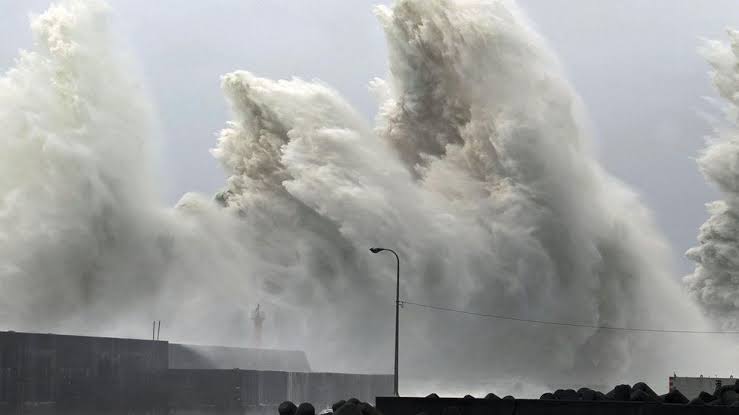Typhoon Nanmadol hits Japan

Millions told to evacuate as ‘unprecedented’ danger looms
Typhoon Nanmadol made landfall in south-western Japan on Sunday night, as authorities urged millions of people to take shelter from the powerful storm’s high winds and torrential rain.
The storm officially made landfall around 7 pm local time (10:00 GMT) as its eyewall arrived near Kagoshima city, the Japan Meteorological Agency (JMA) said.
It was packing gusts of up to 234 kilometers per hour and had already dumped up to 500 millimeters of rain in less than 24 hours on parts of south-western Kyushu region.
At least 20,000 people were spending the night in shelters in Kyushu’s Kagoshima and Miyazaki prefectures, where the JMA has issued a rare “special warning” – an alert that is issued only when it forecasts conditions seen once in several decades.
National broadcaster NHK, which collates information from local authorities, said more than 7 million people had been told to move to shelters or take refuge in sturdy buildings to ride out the storm.
The evacuation warnings are not mandatory, and authorities have at times struggled to convince people to move to shelters before extreme weather.
They sought to drive home their concerns about the weather system throughout the weekend.
“Please stay away from dangerous places, and please evacuate if you feel even the slightest hint of danger,” Japanese Prime Minister Fumio Kishida tweeted after convening a government meeting on the storm.
“It will be dangerous to evacuate at night. Please move to safety while it’s still light outside.”
The JMA has warned the region could face “unprecedented” danger from high winds, storm surges and torrential rain and called the storm “very dangerous.”
“Areas affected by the storm are seeing the sort of rain that has never been experienced before,” Hiro Kato, the head of the Weather Monitoring and Warning Centre, told reporters Sunday.
“Especially in areas under landslide warnings, it is extremely probable that some kinds of landslides are already happening.”
He urged “maximum caution even in areas where disasters do not usually happen.”
By Sunday evening, utility companies said nearly 200,000 homes across the region were without power.
Trains, flights and ferry runs were cancelled until the passage of the storm, and even some convenience stores – generally open all hours and considered a lifeline in disasters – were shutting their doors.
“The southern part of the Kyushu region may see the sort of violent wind, high waves and high tides that have never been experienced before,” the JMA said on Sunday, urging residents to exercise “the highest caution possible.”
On the ground, an official in Kagoshima’s Izumi city said conditions were deteriorating rapidly by Sunday afternoon.
“The wind has become extremely strong. Rain is falling hard too,” he said.



